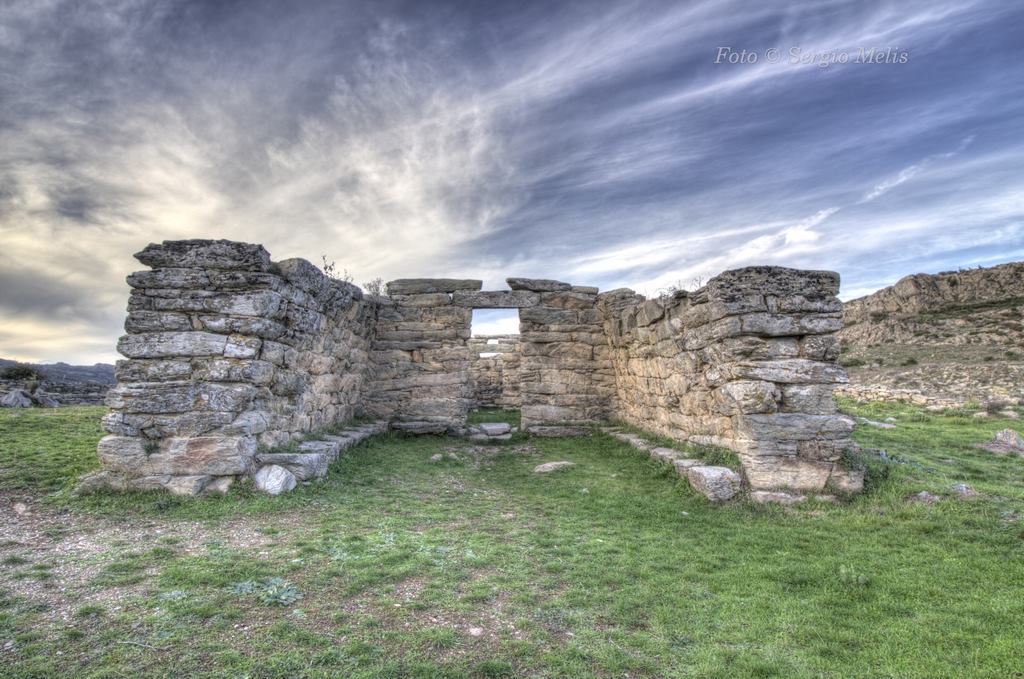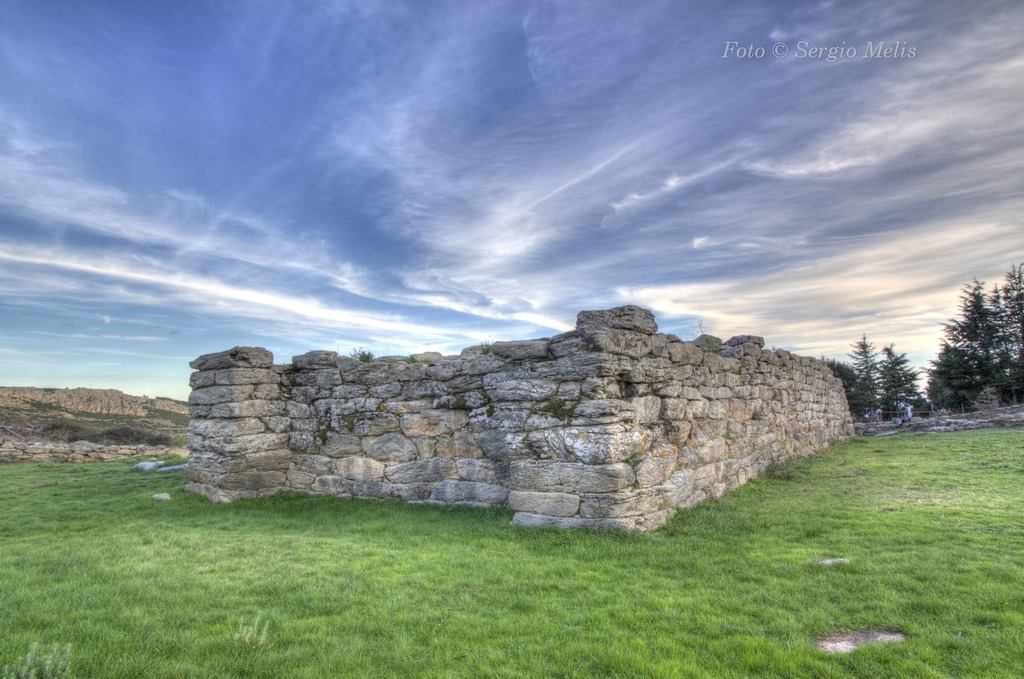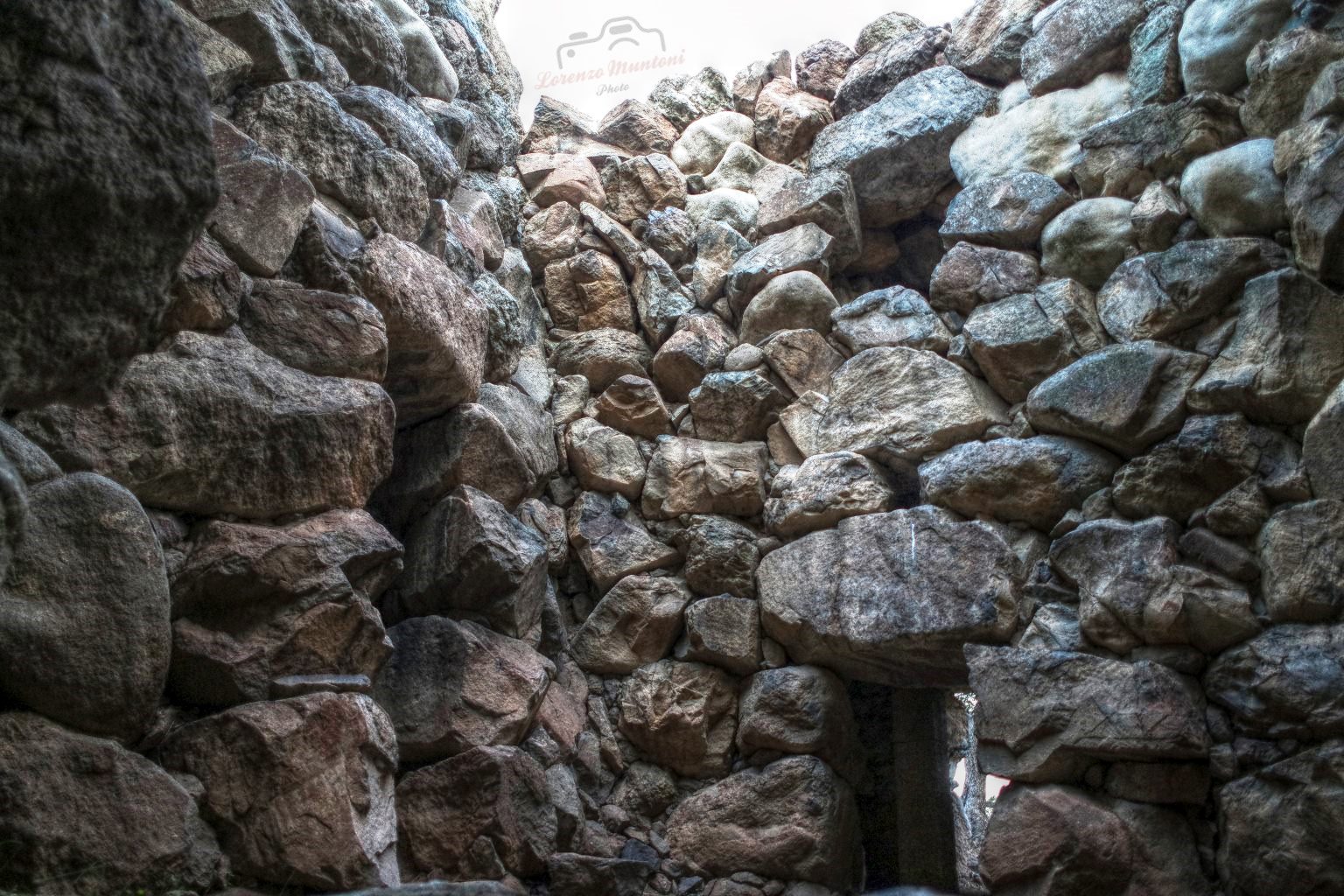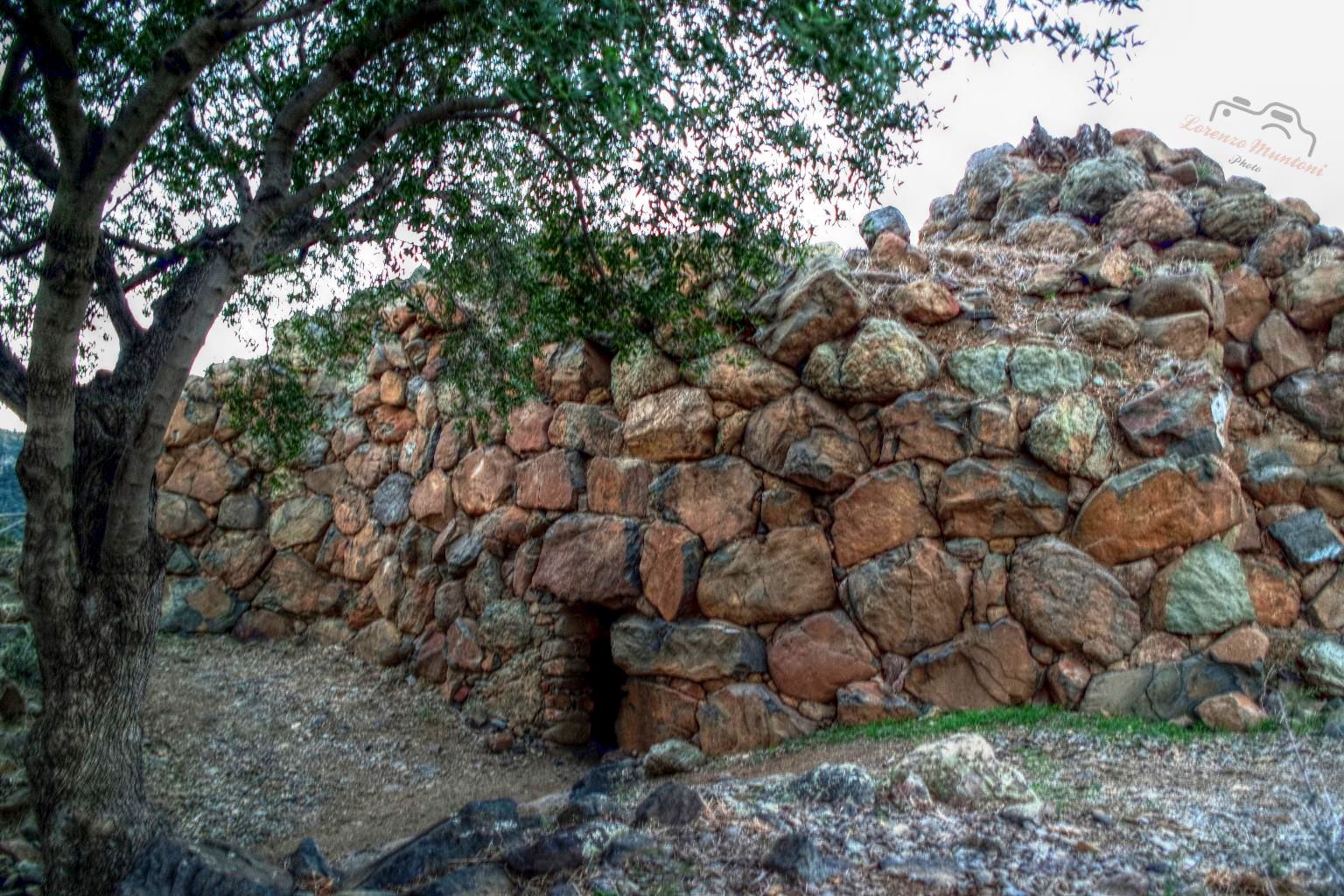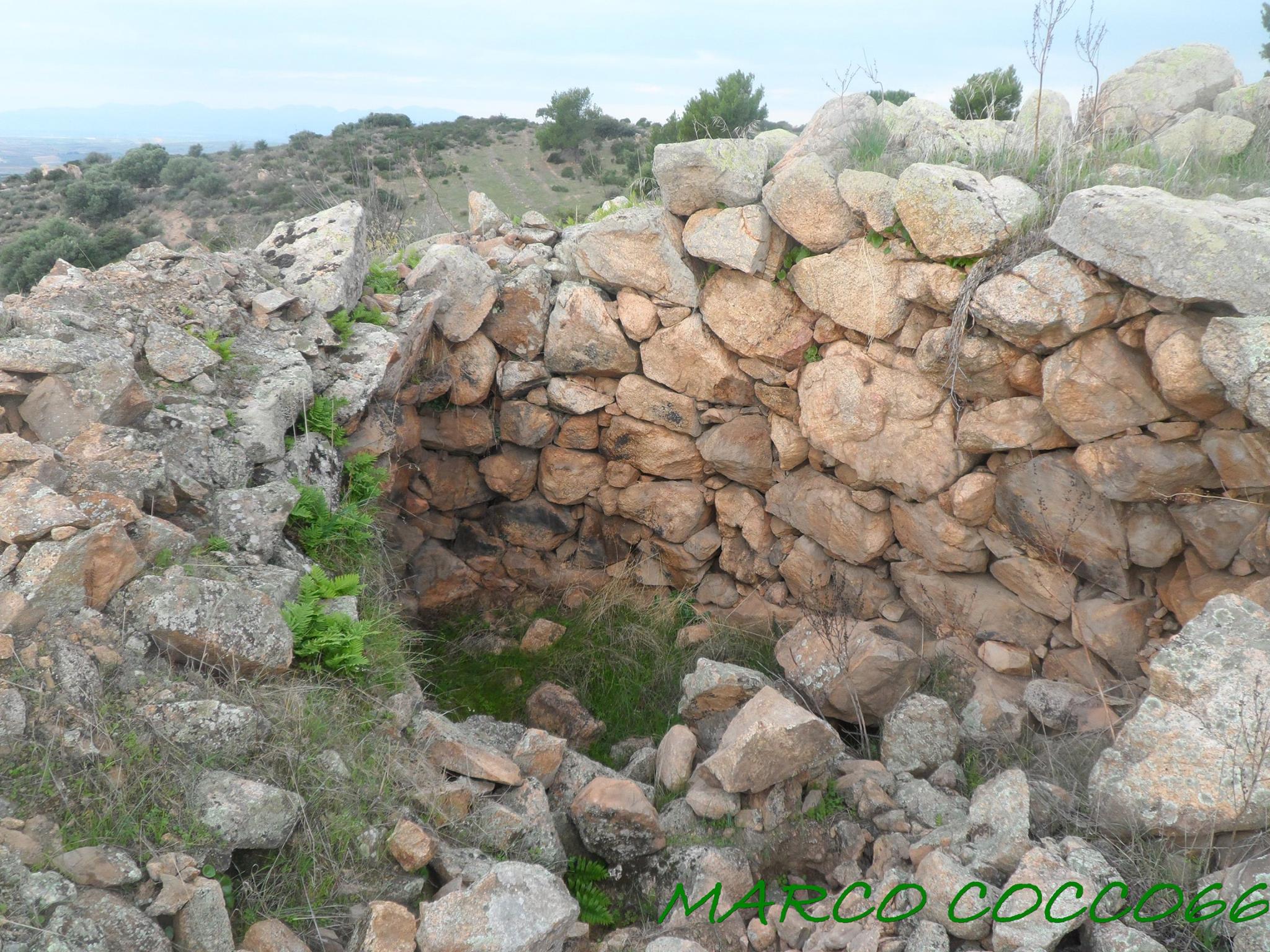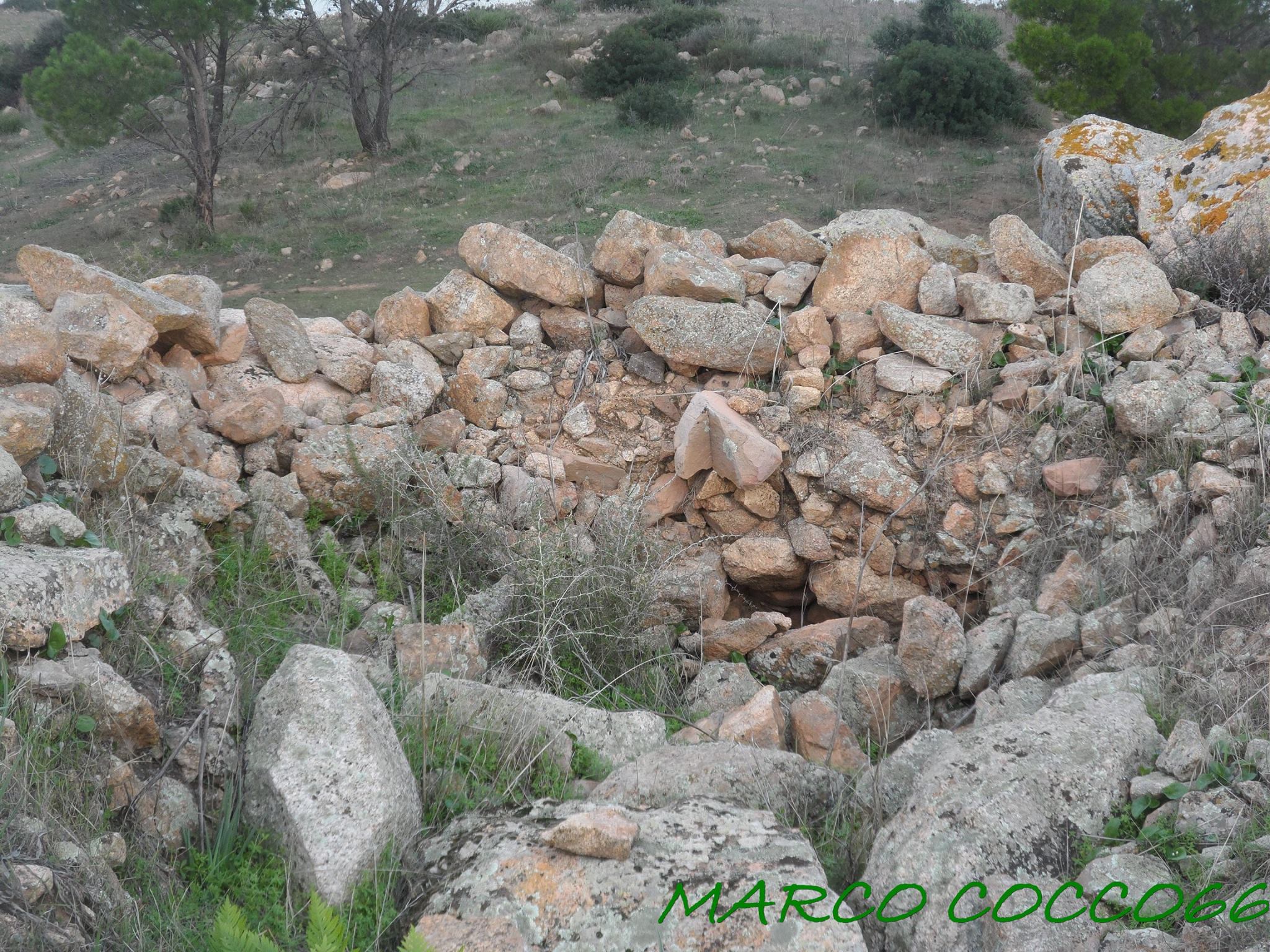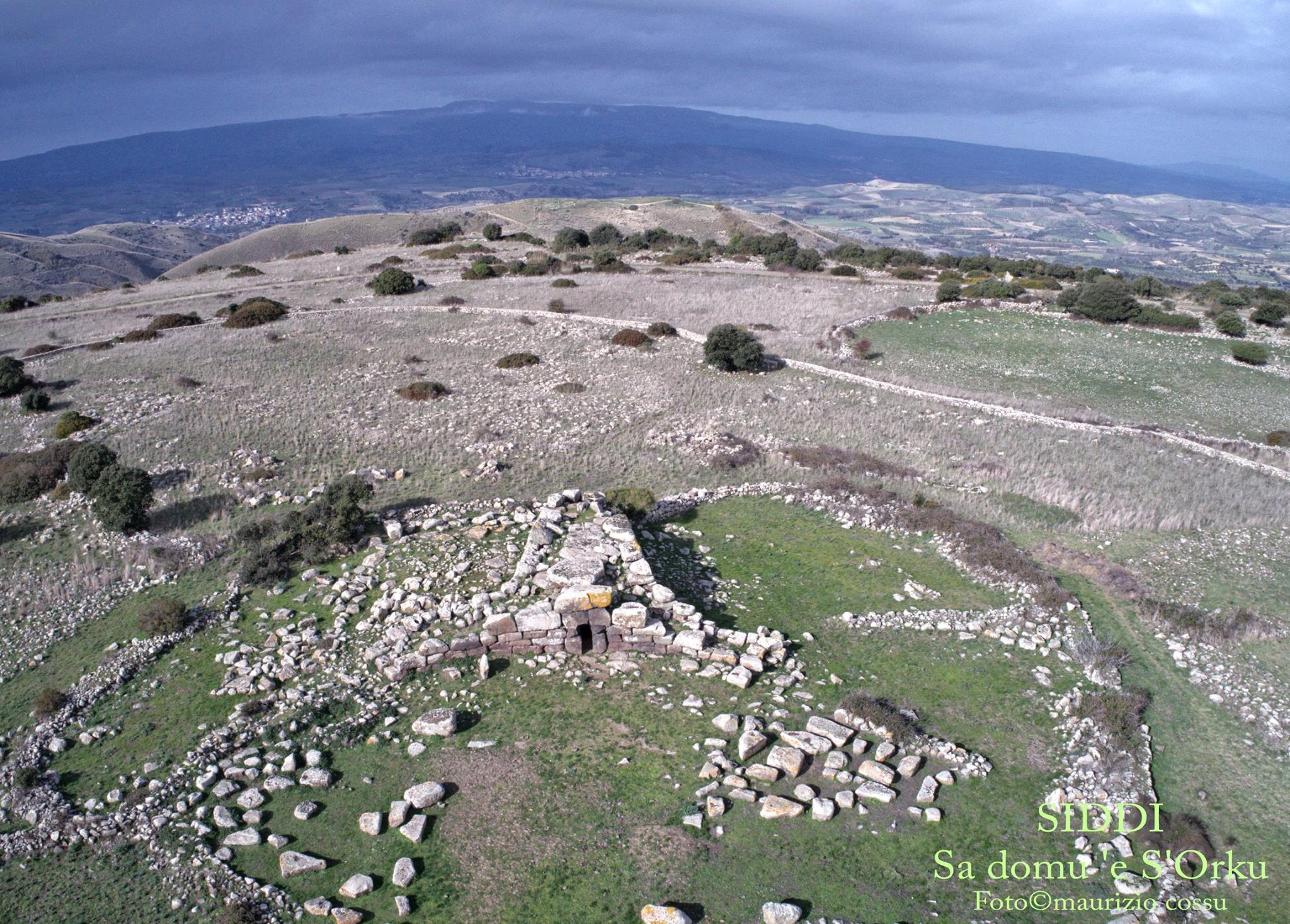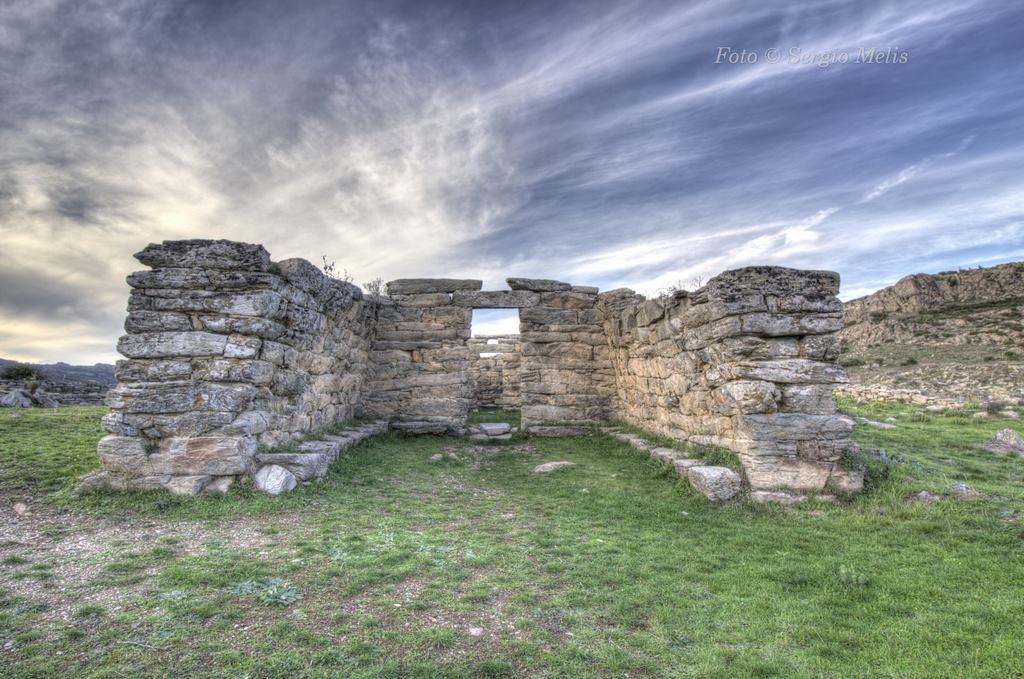According to Giovanni Ugas, in the world of the underworld, the lunar goddess Diana (in ethnographic terms “Giana”), who in Sardinian ethnographic tradition welcomed the deceased, “had to rely on the collaboration of a character identifiable with a male deity that was in turn assimilated with the Greek-Latin Orkos (Sardinian Orcu), which ended up replacing her in the nuragic context. Diana is indeed linked to the pre-nuragic hypogean tombs, while Orcu, comparable to the Etruscan Fersu-Perseus and to Hermes the Dactyl and psychopomp, often appears connected with nuragic giant tombs; so much so that it cannot be excluded that behind Orcu hides a paredro of Orgia, venerated in the nuragic celestial temples of the ‘in antis’ type such as ‘Sa domu de Orgìa’ the house of Orgìa of Esterzili…” (Giovanni Ugas: “The Dawn of the Nuraghi” – Ed. Fabula 2005).
In the attachments: The temple “Omu ‘e Orgia” in Esterzili (Sergio Melis); the nuraghi “Sa Domu ‘e s’Orku” of Sarroch (Lorenzo Muntoni), of Dolianova (Dolianova Archeologica) and of Donori (Marco Cocco); the giant tomb “Sa domu ‘e s’Orku” of Siddi (Maurizio Cossu and Romano Stangherlin).